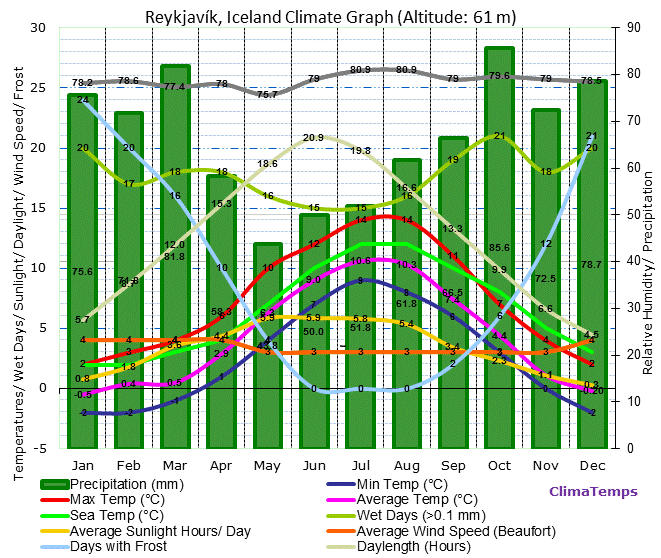Data center construction boom starts in Iceland

Large IT corporations seek to build more data centers in regions with a steady cool climate. This saves a significant amount of money, since cooling in such places is a fairly simple task. The infrastructure of the cooling system can be very simple, and the air intake can be carried out simply from the street. This is the reason why Facebook has built its data center in Lulea. Google, Microsoft and some other companies also began to build their data centers almost at the North Pole.
In addition to cooling, there is another factor that can make even the most attractive region in terms of climate unprofitable for the owner of the data center. This is energy. Lack of energy infrastructure or its unreliability is a critical factor. In principle, there are not so many places where a cool climate and a reliable energy infrastructure (plus inexpensive energy) are combined. Iceland is one of these regions.

The temperature corridor (the difference between the maximum and minimum temperatures) is optimal here.
')
As you can see, the climate here is optimal in terms of the stability of the cost of cooling the capacity of the data center. Temperature fluctuations are very small, everything is stable.
So far, not all companies have realized the attractiveness of the region, Verne Global was the first to start building data centers here. Not so long ago, the company has already built one data center in the region, the seismic activity in which is minimal (the region is located west of Reykjavik). Earlier, a NATO base was located here, now there is a data center. Now the company is going to build a second, on a 45-acre site.
Verne Global has made its data center even more attractive by entering into a contract with an Icelandic energy company, Landsvirkjun . As already mentioned earlier in Habré, only 5% of the energy produced in Iceland goes to the needs of households, everything else is consumed by companies, factories and plants. Iceland has significant renewable energy resources (geothermal and other types of energy), and if necessary, can increase the production of electrical energy.
According to experts, the energy system of Iceland is the second in the world in terms of reliability, plus the price of energy is not so high here, and it is also stable. That is why various companies can predict their costs associated with electricity for many years to come. As for Verne Global, this company calculated its costs until 2030. Accordingly, the company's customers can be confident that the cost of services will be stable.
BWM Group, a Verne Global client, can reduce energy costs by up to 80% if it transfers its core computing power to Iceland.
The data centers erected in Iceland are protected from most threats, including the effects of volcanic eruptions, so the work of such a data center is very stable and the reliability indicator is one of the highest in the world.
So far, many companies do not take Iceland into account, as an ideal place to host data centers. This is largely due to the remoteness of the region (and in modern conditions these fears have no basis). In a couple of years, IT companies will probably fight a place under the Sun in this region, both literally and figuratively.
Source: https://habr.com/ru/post/253847/
All Articles